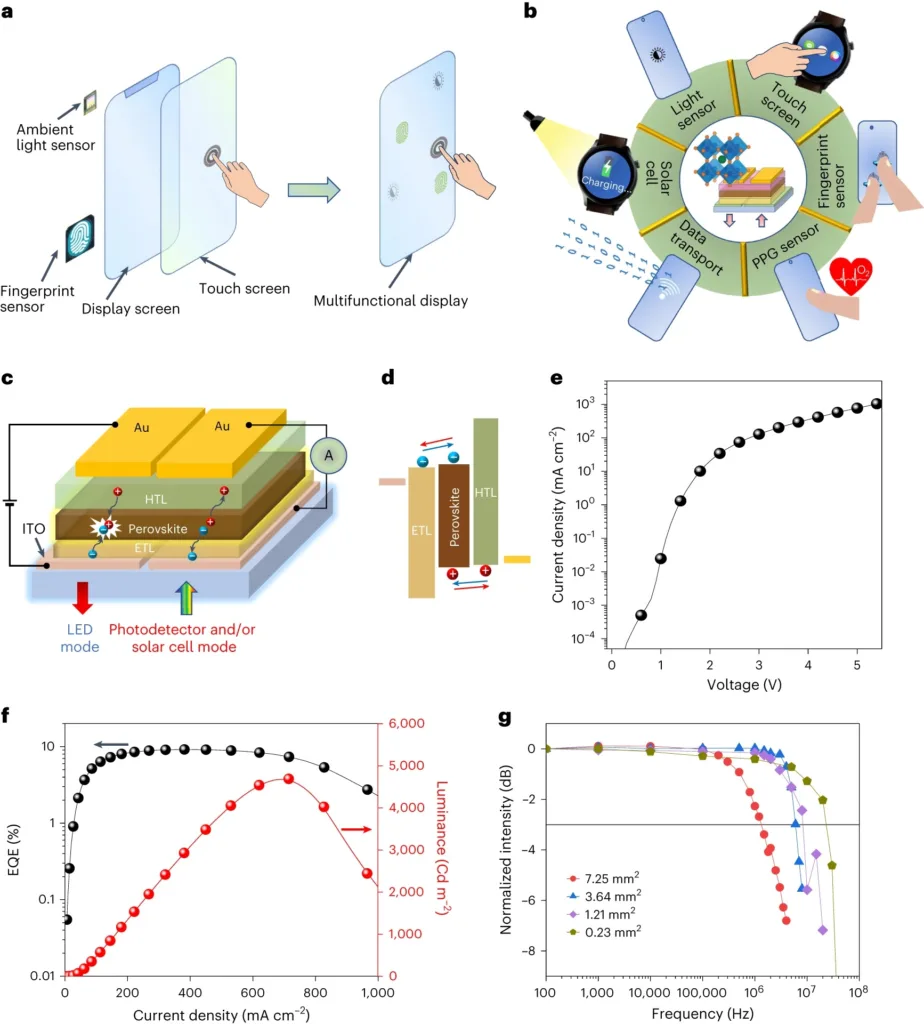Researchers from Linköping University in Sweden have introduced a novel digital display technologyby using LEDs made from perovskite (PeLEDs) that integrate multiple sensor functionalities directly within the LEDs, eliminating the need for additional sensors. This allows the display to not only show information but also respond to touch, light, fingerprints, and even the user’s pulse. As if that was not enough, these PeLEDs can also act as solar cells, enabling the device screen to charge through light exposure.
The research team has successfully developed PeLEDs in red, green, and blue, essential for creating a full-color display. However, challenges such as improving the service life of PeLEDs remain, with current screens functioning for only a few hours before material instability occurs. The researchers are optimistic that these issues will be resolved within the next decade, paving the way for this technology to become commercially viable.

PeLEDs stand out for their potential in creating high-quality displays characterized by high color purity, efficiency, brightness, and compatibility with various deposition processes. Their high optical absorption and superior carrier transport properties make them ideal for developing photo-responsive LEDs. This key feature is exploited to merge multiple sensor functions directly within the display pixels, thus eliminating the need for integrating additional sensors. The result is a display capable of performing as a touch screen, ambient light sensor, and image sensor, including fingerprint recognition, through the photo-responsive capabilities of the PeLEDs that enable detection of light excitation and efficient conversion of light to electricity.
In terms of device structure, the PeLEDs are designed with optimized charge transport layers to ensure efficient carrier injection or extraction, which is crucial for achieving photo-responsiveness. The display employs materials like zinc oxide and poly(9,9-dioctylfluorene-co-N-(4-butylphenyl)diphenylamine) for electron and hole transport, respectively. The dual functionality of light emission (LED mode) and light detection (photodetector/solar cell mode) is facilitated by careful design of the device structure and energy level alignment, allowing for the separation and collection of photogenerated carriers by electrodes under light excitation.
The PeLEDs exhibit strong electroluminescence and photo-response performance, making them suitable for displays that need to emit light for visual output and respond to external light for sensing applications. Furthermore, the displays demonstrate high-speed switching capabilities and low-noise operation, which are essential for fast data transmission and sensitive light detection. Demonstrated applications of this multifunctional PeLED display include touch screen operation, ambient light sensing, fingerprint recognition, and use as a self-illuminated image sensor for capturing surface images. Moreover, the ability of the display to convert ambient light into electricity presents new opportunities for energy harvesting and self-charging electronic devices, opening up avenues for further innovations in display technology.
Reference
Bao, C., Yuan, Z., Niu, W. et al. A multifunctional display based on photo-responsive perovskite light-emitting diodes. Nat Electron (2024). https://doi.org/10.1038/s41928-024-01151-x

